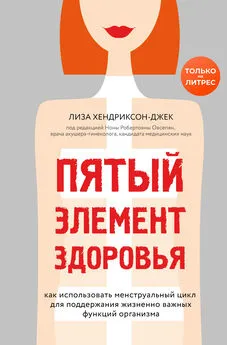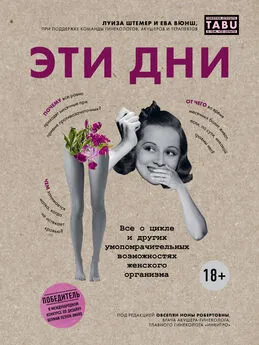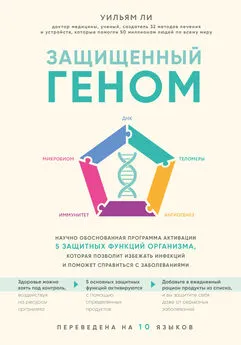Лиза Хендриксон-Джек - Пятый элемент здоровья. Как использовать менструальный цикл для поддержания жизненно важных функций организма
- Название:Пятый элемент здоровья. Как использовать менструальный цикл для поддержания жизненно важных функций организма
- Автор:
- Жанр:
- Издательство:Литагент 5 редакция
- Год:2020
- Город:Москва
- ISBN:978-5-04-104425-1
- Рейтинг:
- Избранное:Добавить в избранное
-
Отзывы:
-
Ваша оценка:
Лиза Хендриксон-Джек - Пятый элемент здоровья. Как использовать менструальный цикл для поддержания жизненно важных функций организма краткое содержание
«Почти» – потому что у женщин есть пятый показатель здоровья, на который, к сожалению, все еще мало кто обращает внимание, – это менструальный цикл. Короткий или длинный, регулярный или непредсказуемый – цикл может быть очень разным, и каждый его параметр, каждое изменение служат индикатором той или иной проблемы в организме. Планируете вы беременность или нет, овуляция имеет значение для поддержания здоровья.
Автор этой книги расскажет, что именно влияет на состояние менструального цикла, и научит вас составлять его график для максимально точного и удобного отслеживания различных изменений и контроля здоровья.
Пятый элемент здоровья. Как использовать менструальный цикл для поддержания жизненно важных функций организма - читать онлайн бесплатно ознакомительный отрывок
Интервал:
Закладка:
18. Chang, King-Jen, Tigris T.Y. Lee, Gustavo Linares-Cruz, Sabine Fournier and Bruno de Ligniéres. “Influences of percutaneous administration of estradiol and progesterone on human breast epithelial cell cycle in vivo.” Fertility and Sterility 63, no. 4 (1995): 785–791; Prior, Jerilynn C. “Preventive Powers of Ovulation and Progesterone: Ovulation and Breast Health.” Accessed January 8, 2017. www.cemcor.ca/files/uploads/6_Ovulation_and_Breast_Health.pdf
19. Whelan, Elizabeth A., Dale P. Sandler, Jan L. Root, Ken R. Smith, and Clarice R. Weinberg. “Menstrual cycle patterns and risk of breast cancer.” American Journal of Epidemiology 140, no. 12 (1994): 1081–1090.
20. Seifert-Klauss, Vanadin, and Jerilynn C. Prior. “Progesterone and bone: actions promoting bone health in women.” Journal of Osteoporosis (2010): 1–18.
21. Hergenroeder, Albert C. “Bone mineralization, hypothalamic amenorrhea, and sex steroid therapy in female adolescents and young adults.” The Journal of Pediatrics 126, no. 5 (1995): 683–689; Cann, Christopher E., Mary C. Martin, Harry K. Genant, and Robert B. Jaffe. “Decreased spinal mineral content in amenorrheic women.” JAMA 251, no. 5 (1984): 626–629; Chou, Sharon H., and Christos Mantzoros. “Bone metabolism in anorexia nervosa and hypothalamic amenorrhea.” Metabolism 80 (2018): 91–104.
22. Hart, Roger, and Dorota A. Doherty. “The potential implications of a PCOS diagnosis on a woman’s long-term health using data linkage.” The Journal of Clinical Endocrinology & Metabolism 100, no. 3 (2015): 911–919; Orio Jr., Francesco, Stefano Palomba, Letizia Spinelli, Teresa Cascella, Libuse Tauchmanovà, Fulvio Zullo, Gaetano Lombardi, and Annamaria Colao. “The cardiovascular risk of young women with polycystic ovary syndrome: an observational, analytical, prospective case-control study.” The Journal of Clinical Endocrinology & Metabolism 89, no. 8 (2004): 3696–3701.
23. Cheng, Wanli, Ontario D. Lau, and Nada A. Abumrad. “Two antiatherogenic effects of progesterone on human macrophages; inhibition of cholesteryl ester synthesis and block of its enhancement by glucocorticoids.” The Journal of Clinical Endocrinology & Metabolism 84, no. 1 (1999): 265–271; Prior, Jerilynn C. “Progesterone within ovulatory menstrual cycles needed for cardiovascular protection: an evidence-based hypothesis.” Journal of Restorative Medicine 3, no. 1 (2014): 85–103.
Глава 2
1. Groothuis, P.G., H.H.N.M. Dassen, A. Romano and C. Punyadeera. “Estrogen and the endometrium: lessons learned from gene expression profiling in rodents and human.” Human Reproduction Update 13, no. 4 (2007): 405–417.
2. Kumar, Nirmala S., Jennifer Richer, Gareth Owen, Elizabeth Litman, Kathryn B. Horwitz, and Kimberly K. Leslie. “Selective down-regulation of progesterone receptor isoform B in poorly differentiated human endometrial cancer cells: implications for unopposed estrogen action.” Cancer Research 58, no. 9 (1998): 1860–1865.
3. Hilgers, Thomas W. (2010). The NaPro Technology Revolution: Unleashing the Power in a Woman’s Cycle. New York, NY: Beaufort Books, 331–335.
4. Там же, 332; Fehring, Richard J., Mary Schneider, and Kathleen Raviele. “Variability in the phases of the menstrual cycle.” Journal of Obstetric, Gynecologic, & Neonatal Nursing 35, no. 3 (2006): 376–377.
5. Fehring, Richard J., Mary Schneider, and Kathleen Raviele. “Variability in the phases of the menstrual cycle.” Journal of Obstetric, Gynecologic, & Neonatal Nursing 35, no. 3 (2006): 376–377.
6. Guttorm, Eigil. “Menstrual bleeding with intrauterine contraceptive devices.” Acta Obstetricia et Gynecologica Scandinavica 50, no. 1 (1971): 9–16; Dasharathy, Sonya S., Sunni L. Mumford, Anna Z. Pollack, Neil J. Perkins, Donald R. Mattison, Jean Wactawski-Wende, and Enrique F. Schisterman. “Menstrual bleeding patterns among regularly menstruating women.” American Journal of Epidemiology 175, no. 6 (2012): 536–545; Livingstone, Mark, and Ian S. Fraser. “Mechanisms of abnormal uterine bleeding.” Human Reproduction Update 8, no. 1 (2002): 60–67.
7. Fehring, Richard J., Mary Schneider, and Kathleen Raviele. “Variability in the phases of the menstrual cycle.” Journal of Obstetric, Gynecologic, & Neonatal Nursing 35, no. 3 (2006): 376–377.
8. Price, D.C., E.M. Forsyth, S.H. Cohn, and E.P. Cronkite. “The study of menstrual and other blood loss, and consequent iron deficiency, by Fe59 whole-body counting.” Canadian Medical Association Journal 90, no. 2 (1964): 51; Fraser, Ian S., H.O.D. Critchley, M.G. Munro, and M. Broder. “Can we achieve international agreement on terminologies and definitions used to describe abnormalities of menstrual bleeding?” Human Reproduction 22, no. 3 (2007): 635–643; Dasharathy, Sonya S., Sunni L. Mumford, Anna Z. Pollack, Neil J. Perkins, Donald R. Mattison, Jean Wactawski-Wende, and Enrique F. Schisterman. “Menstrual bleeding patterns among regularly menstruating women.” American Journal of Epidemiology 175, no. 6 (2012): 536–545; Hallberg, Leif, Ann-Marie Hôgdahl, Lennart Nilsson, and Göran Rybo. “Menstrual blood loss – a population study.” Acta Obstetricia et Gynecologica Scandinavica 45, no. 3 (1966): 320–351; Hallberg, Leif, Ann-Marie Högdahl, Lennart Nilsson, and Göran Rybo. “Menstrual blood loss and iron deficiency.” Acta Medica Scandinavica 180, no. 5 (1966): 639–650.
9. Hallberg, Leif, and Lennart Nilsson. “Constancy of individual menstrual blood loss.” Acta Obstetricia et Gynecologica Scandinavica 43, no. 4 (1964): 352–359; Cheong, Revelita L., Miriam D. Kuizon, and Rosario T. Tajaon. “Menstrual blood loss and iron nutrition in Filipino women.” The Southeast Asian Journal of Tropical Medicine and Public Health 22, no. 4 (1991): 595–604; Dasharathy, Sonya S., Sunni L. Mumford, Anna Z. Pollack, Neil J. Perkins, Donald R. Mattison, Jean Wactawski-Wende, and Enrique F. Schisterman. “Menstrual bleeding patterns among regularly menstruating women.” American Journal of Epidemiology 175, no. 6 (2012): 536–545; Barer, Adelaide P., and W.M. Fowler. “The blood loss during normal menstruation.” American Journal of Obstetrics and Gynecology 31, no. 6 (1936): 979–986; Price, D.C., E.M. Forsyth, S.H. Cohn, and E.P. Cronkite. “The study of menstrual and other blood loss, and consequent iron deficiency, by Fe59 whole-body counting.” Canadian Medical Association Journal 90, no. 2 (1964): 51; Chen, Bertha H., and Linda C. Giudice. “Dysfunctional uterine bleeding.” Western Journal of Medicine 169, no. 5 (1998): 280.
10. Fraser, Ian S., H.O.D. Critchley, M.G. Munro, and M. Broder. “Can we achieve international agreement on terminologies and definitions used to describe abnormalities of menstrual bleeding?” Human Reproduction 22, no. 3 (2007): 635–643.
11. Kovacs, Peter, S.Z. Matyas, K. Boda, and S.G. Kaali. “The effect of endometrial thickness on IVF/ICSI outcome.” Human Reproduction 18, no. 11 (2003): 2337–2341; Israel, Robert, John D. Isaacs, Carla S. Wells, Daniel B. Williams, Randall R. Odem, Michael J. Gast, and Ronald C. Strickler. “Endometrial thickness is a valid monitoring parameter in cycles of ovulation induction with menotropins alone.” Fertility and Sterility 65, no. 2 (1996): 262–266; Alborzi, S., M. Momtahan, J. Zolghadri, and M.E. Parsanezhad. “The effect of endometrial pattern and thickness on pregnancy rate in controlled ovarian hyperstimulation-intrauterine insemination.” Medical Journal of the Islamic Republic of Iran (MJIRI) 19, no. 3 (2005): 189–193; Oliveira, J.B.A., R.L.R. Baruffi, A.L. Mauri, C.G. Petersen, M.C. Borges, and J.G. Franco. “Endometrial ultrasonography as a predictor of pregnancy in an in-vitro fertilization programme after ovarian stimulation and gonadotrophin-releasing hormone and gonadotrophins.” Human Reproduction 12, no. 11 (1997): 2515–2518; Dickey, Richard P., Terry T. Olar, Steven N. Taylor, David N. Curole, and Ellen M. Matulich. “Relationship of endometrial thickness and pattern to fecundity in ovulation induction cycles: effect of clomiphene citrate alone and with human menopausal gonadotropin.” Fertility and Sterility 59, no. 4 (1993): 756–760; Habibzadeh, Victoria, Sayed Noureddin Nematolahi Mahani and Hadiss Kamyab. “The correlation of factors affecting the endometrial thickness with pregnancy outcome in the IUI cycles.” Iranian Journal of Reproductive Medicine 9, no. 1 (2011): 41.
12. Dickey, Richard P., Terry T. Olar, Steven N. Taylor, David N. Curole, and Ellen M. Matulich. “Relationship of endometrial thickness and pattern to fecundity in ovulation induction cycles: effect of clomiphene citrate alone and with human menopausal gonadotropin.” Fertility and Sterility 59, no. 4 (1993): 756–760; Israel, Robert, John D. Isaacs, Carla S. Wells, Daniel B. Williams, Randall R. Odem, Michael J. Gast, and Ronald C. Strickler. “Endometrial thickness is a valid monitoring parameter in cycles of ovulation induction with menotropins alone.” Fertility and Sterility 65, no. 2 (1996): 262–266; Alborzi, S., M. Momtahan, J. Zolghadri, and M.E. Parsanezhad. “The effect of endometrial pattern and thickness on pregnancy rate in controlled ovarian hyperstimulation-intrauterine insemination.” Medical Journal of the Islamic Republic of Iran (MJIRI) 19, no. 3 (2005): 191; Oliveira, J.B.A., R.L.R. Baruffi, A.L. Mauri, C.G. Petersen, M.C. Borges, and J.G. Franco. “Endometrial ultrasonography as a predictor of pregnancy in an in-vitro fertilization programme after ovarian stimulation and gonadotrophin-releasing hormone and gonadotrophins.” Human Reproduction 12, no. 11 (1997): 2517; Habibzadeh, Victoria, Sayed Noureddin Nematolahi Mahani, and Hadiss Kamyab. “The correlation of factors affecting the endometrial thickness with pregnancy outcome in the IUI cycles.” Iranian Journal of Reproductive Medicine 9, no. 1 (2011): 45.
13. Dickey, Richard P., Terry T. Olar, Steven N. Taylor, David N. Curole, and Ellen M. Matulich. “Relationship of endometrial thickness and pattern to fecundity in ovulation induction cycles: effect of clomiphene citrate alone and with human menopausal gonadotropin.” Fertility and Sterility 59, no. 4 (1993): 756–760.
14. Kovacs, Peter, S.Z. Matyas, K. Boda, and S.G. Kaali. “The effect of endometrial thickness on IVF/ICSI outcome.” Human Reproduction 18, no. 11 (2003): 2339.
15. Chen, Bertha H., and Linda C. Giudice. “Dysfunctional uterine bleeding.” Western Journal of Medicine 169, no. 5 (1998): 280–284.
16. Livingstone, Mark, and Ian S. Fraser. “Mechanisms of abnormal uterine bleeding.” Human Reproduction Update 8, no. 1 (2002): 60–67.
17. Там же, 61.
18. Silberzweig, James E., Daniel K. Powell, Alan H. Matsumoto, and James B. Spies. “Management of uterine fibroids: a focus on uterine-sparing interventional techniques.” Radiology 280, no. 3 (2016): 675–692; Donnez, Jacques, and Marie-Madeleine Dolmans. “Uterine fibroid management: from the present to the future.” Human Reproduction Update 22, no. 6 (2016): 665–686.
19. Munro, Malcolm G., Hilary O.D. Critchley, Michael S. Broder, Ian S. Fraser, and FIGO Working Group on Menstrual Disorders. “FIGO classification system (PALM-COEIN) for causes of abnormal uterine bleeding in nongravid women of reproductive age.” International Journal of Gynecology & Obstetrics 113, no. 1 (2011): 3–13; Chen, Bertha H., and Linda C. Giudice. “Dysfunctional uterine bleeding.” Western Journal of Medicine 169, no. 5 (1998): 280–284.
20. Peric, H., and I. S. Fraser. “The symptomatology of adenomyosis.” Best Practice & Research: Clinical Obstetrics & Gynaecology 20, no. 4 (2006): 547–555; Livingstone, Mark, and Ian S. Fraser. “Mechanisms of abnormal uterine bleeding.” Human Reproduction Update 8, no. 1 (2002): 62.
Читать дальшеИнтервал:
Закладка:









